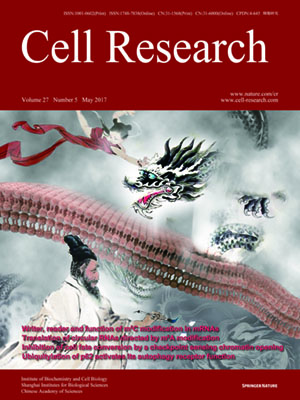
Volume 27, No 5, May 2017
ISSN: 1001-0602
EISSN: 1748-7838 2018
impact factor 17.848*
(Clarivate Analytics, 2019)
Volume 27 Issue 5, May 2017: 595-597
RESEARCH HIGHLIGHTS
Love laughs at Locksmiths: Ubiquitylation of p62 unlocks its autophagy receptor potential
Owen Conway1 and Vladimir Kirkin1
1Cancer Research UK Cancer Therapeutics Unit, Division of Cancer Therapeutics, The Institute of Cancer Research, London, UK
Correspondence: Vladimir Kirkin, Tel: +44 208 722 4210(Vladimir.Kirkin@icr.ac.uk)
The discovery made a decade ago that the signaling adapter p62/sequestosome-1 (p62) plays a role in selective degradation of ubiquitylated targets paved the way for today's understanding of how the autophagy pathway handles bulky cargos, such as protein aggregates, damaged mitochondria, and intracellular bacteria1. As the prototypic receptor for selective autophagy, p62 (Figure 1A, inset) contains a C-terminal ubiquitin (Ub)-binding domain (UBA) and an intermediate LC3-interacting region (LIR) responsible for binding Ub-like proteins (UBLs) of the LC3/GABARAP family, which are covalently conjugated to the membrane of autophagic vesicles (autophagosomes). By tethering the ubiquitylated cargo to the nascent autophagosome (phagophore), p62 stabilizes the lipid membrane and promotes its local expansion on the surface of the cargo2. The scaffolding and tethering roles of p62 are reinforced by its oligomeric nature: its N-terminal Phox and Bem1 (PB1) domain interacts with itself in a front-to-back fashion driving formation of helical filaments that can extend for 20-60 nm in vitro3.
10.1038/cr.2017.56
FULL TEXT | PDF
Browse 1556


